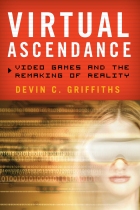 When you’re talking about pain, nothing comes close to the excruciating intensity of burning alive. Survivors of severe burns report trying anything—anything—to stop the pain, sometimes resigning themselves to death and hoping they won’t be on fire much longer before the end.
When you’re talking about pain, nothing comes close to the excruciating intensity of burning alive. Survivors of severe burns report trying anything—anything—to stop the pain, sometimes resigning themselves to death and hoping they won’t be on fire much longer before the end.
And that’s just during the event. Those who are lucky enough to live through the experience have another nightmare to look forward to: recovery. Burn wounds are especially susceptible to infection, and have to be cleaned daily. For the victim, this amounts to reliving the torture of being burned over and over again. The pain is nearly as severe, and the drugs to alleviate it are woefully inadequate. Morphine and other opioids are effective when patients are resting, but during treatment, they just don’t cut it: invented to relieve pain in 1804, morphine hasn’t changed since. For all intents and purposes, pain management’s been stuck in the 19th century.
Until recently, that is. Beginning in late 2006, caregivers received a new tool for fighting pain, one that doesn’t require a prescription and has no risk of dependency. It’s a videogame called SnowWorld, and it’s the first immersive virtual world designed specifically for reducing pain.
The environment of SnowWorld is as far from hot as you can get: icy, snow-covered, and populated with penguins, snowmen, and woolly mammoths. Patients undergoing treatment for severe burns don a VR headset or look through a pair of goggles, and find themselves transported into this world where they can run around and toss snowballs at the inhabitants for as long as the PT session lasts. And, believe it or not, it gets results. Says University of Washington researcher Hunter Hoffman, who worked with combat veterans from Iraq and Afghanistan,
What was encouraging was the ones that needed it the most showed the most pain reduction, so the patients that were in the most pain showed the most pain reduction from SnowWorld.”
 The idea behind SnowWorld predates the game by a decade. It’s called immersive VR distraction, and it was co-developed in 1996 by Hoffman and Dr. David Patterson, head of the Division of Psychology of the University of Washington’s Department of Rehabilitation Medicine. Dr. Patterson also works with patients at the university’s Harborview Burn Center, studying psychological techniques for reducing severe burn pain. According to Patterson, the concept is simple:
The idea behind SnowWorld predates the game by a decade. It’s called immersive VR distraction, and it was co-developed in 1996 by Hoffman and Dr. David Patterson, head of the Division of Psychology of the University of Washington’s Department of Rehabilitation Medicine. Dr. Patterson also works with patients at the university’s Harborview Burn Center, studying psychological techniques for reducing severe burn pain. According to Patterson, the concept is simple:
It takes a certain amount of attention to process pain. If you are able to put that attention elsewhere, there is less attention to process pain, and consequently, people will feel less pain.”
This is born out not only in interviews with patients, who universally report drastic pain reduction, but in MRI scans that clearly show less activity in the brain’s pain centers when physical rehab is combined with immersion into SnowWorld.
GQ Magazine just reported the case of First Lieutenant Sam Brown, horribly burned after his Humvee rolled over an IED in Iraq. His full story is here, but some of the descriptions are a bit gruesome, so those of a more delicate constitution might want to read the NPR story here.
Sergeant Oscar Libretto experienced a similar event in 2009, and you can find his story here.
These are only two of the hundreds of veterans from Iraq and Afghanistan who’ve returned after surviving one of the most horrific experiences a human being can endure. But survival is only the beginning of their struggle. Wound care and rehab is taxing and painful, both physically and mentally—on the servicemen and women, the caregivers, and their families. For all of them, the immersive distraction of videogames like SnowWorld is a nothing less than a godsend, improving recovery, providing relief from unimaginable suffering, and offering a glimpse—however fleeting—of a future beyond pain.
To learn more about the Harborview Burn Center, click here.
You can read about immersive VR for pain control here.
And you can watch a video of SnowWorld in action here.

 As any William Gibson fan will tell you, it was only a matter of time.
As any William Gibson fan will tell you, it was only a matter of time. 2011, though, saw a flurry of activity, with both the Army and the Navy exploring the potential of virtual worlds to train their personnel for a variety of battle exercises, from firing torpedoes to preparing for encounters with IEDs and other explosive devices—right down to the nature and damage of an explosion, including haptic (tactile) feedback systems that would simulate being hit with debris.
2011, though, saw a flurry of activity, with both the Army and the Navy exploring the potential of virtual worlds to train their personnel for a variety of battle exercises, from firing torpedoes to preparing for encounters with IEDs and other explosive devices—right down to the nature and damage of an explosion, including haptic (tactile) feedback systems that would simulate being hit with debris.